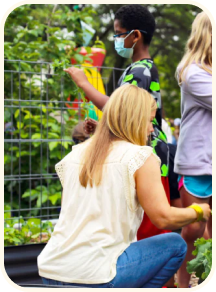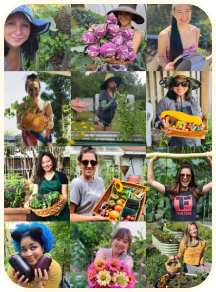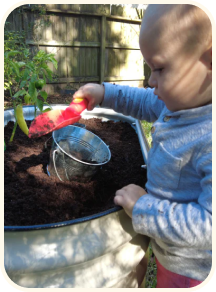No Borders, No Action Too Small: June 5 is World Environment Day
Whether your backyard garden is in full bloom, or you still have some bare spots to fill in (or even many), it’s probably a stretch of the imagination to think it has much in common with the vast, sandy dunes or rocky plateaus of a Saudi Arabian desert.
Yet on World Environment Day, June 5, whatever differences there are don’t matter. The two are inextricably linked by the global observance, which is aimed at:
- Educating people about urgent environmental issues.
- Making people aware of their impact on the environment.
- Encouraging action, including adopting sustainable practices in daily life (reducing waste, conserving water and energy, choosing eco-friendly products); participating in collective efforts, including supporting environmental organizations; and promoting international cooperation on environmental challenges that transcend national borders.

A truly global event
While for many initiatives the term “world” is merely aspirational, in this case, it’s accurate.
The United Nations established World Environment Day in 1972 following the Stockholm Conference on the Human Environment. Today, more than 140 countries participate and there’s even a host nation each year that works with the United Nations Environment Programme (UNEP) to set the theme and organize events.
In 2024, the host is Saudi Arabia, and the theme is “Land restoration: From desert to diamonds and beyond." The goal is to showcase successful land restoration projects around the world and to inspire more of the same — to demonstrate that “diamonds” (fertile soil, healthy ecosystems, and financial independence for local communities) can arise from this crucial environmental effort, not just in Saudi Arabia’s deserts, but well beyond.
Why desert restoration?
Approximately one-third (33%) of the world's land area is classified as desert. This means that deserts cover a significant portion of the Earth's surface, shaping the planet's climate and ecosystems.
The challenge is that deserts are themselves fragile ecosystems and many of these areas are facing degradation. Climate change is one culprit, but so are overgrazing (despite their inhospitable nature, deserts support livestock as well as a variety of grazing animals that have adapted to survive on limited resources) and unsustainable land management practices, including those related to mining, destruction of limited tree cover, unsustainable farming, and even tourism.
These processes actually accelerate desertification (that’s the process that turns fertile land into desert), disrupt habitats and lead to the decline (or extinction) of desert species, worsen water scarcity, and degrade the soil and vegetation.
Ultimately, of course, this can destroy the livelihoods of who people who depend on the desert for survival.
It's a big problem but it’s not impossible to tackle, as Saudi Arabia has shown us. The country is 95% desert and has undertaken massive projects to repair and revitalize degraded desert areas.
For example, the country’s Al Baydha Project is restoring a desert environment near Mecca to create a more sustainable and resilient ecosystem, using rainwater harvesting and permaculture techniques, and planting drought-resistant trees like date palms.
Saudi Arabia is also a leader in desalination technology, converting seawater into freshwater for irrigation projects intended to “green” desert areas.
Altogether, revitalization is expected to help mitigate climate change, improve water security, and support biodiversity, while also improving the lives of Bedouins and others who inhabit the desert.
What you can do now

Compared to those outsized efforts, you might feel like anything you do for World Environment Day is simply small potatoes.
But the truth is, even what seems like no work at all can contribute meaningfully to the greater good.
Here are some ways to connect your passion for gardening with environmental action.
- Learn about sustainable gardening practices. Composting, native plants, and natural pest control are good for your garden and the planet.
- Create a haven for pollinators like bees, butterflies, and hummingbirds. Choose nectar-rich flowers to attract them.
- Composts kitchen scraps and yard waste. Not only does this reduce landfill waste, but it also creates nutrient-packed fertilizer for your plants.
- Conserve water by mulching around plants, collecting rainwater, and investing in drip irrigation.
- Reduce your reliance on chemical fertilizers and pesticides.
- Plant a tree.
- Organize a community, neighborhood, or even family clean-up day.
- Support local farmers markets. Opting for locally grown produce reduces your carbon footprint.
- Look for ways to reuse or repurpose the plastic pots your garden shop plants come in. Better yet, exchange plants with other gardeners.
- Tell your friends. Organize a community gardening event to share ideas.
Remember, every little bit counts! By incorporating sustainable practices into your gardening routine, you're not just nurturing your plants, you're contributing to a healthier planet for everyone. And that’s like making World Environment Day every day.





























Leave a comment